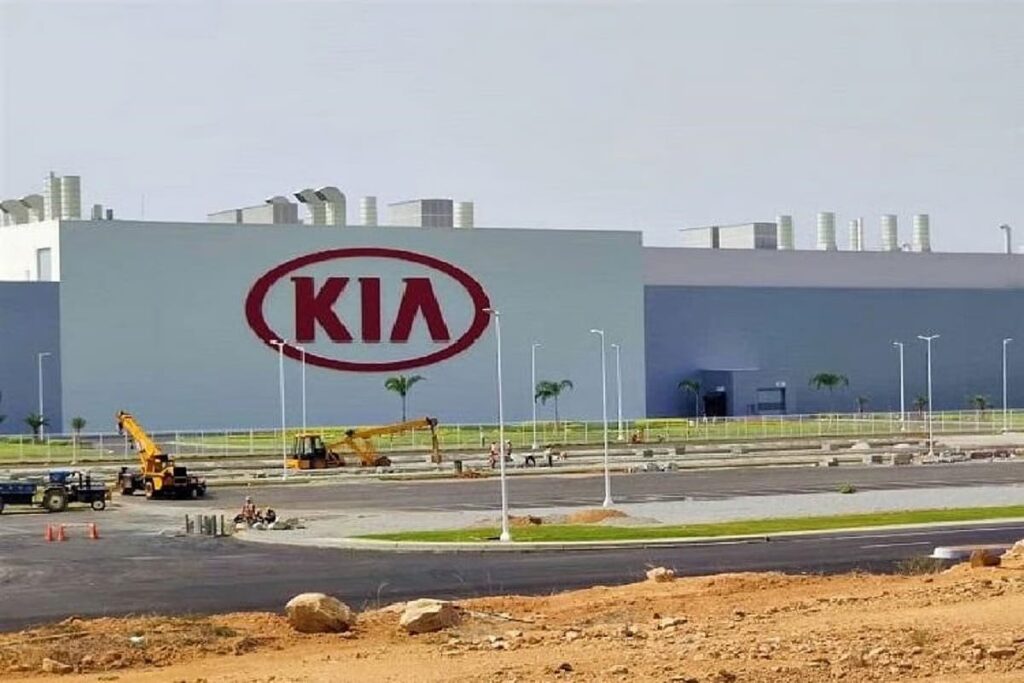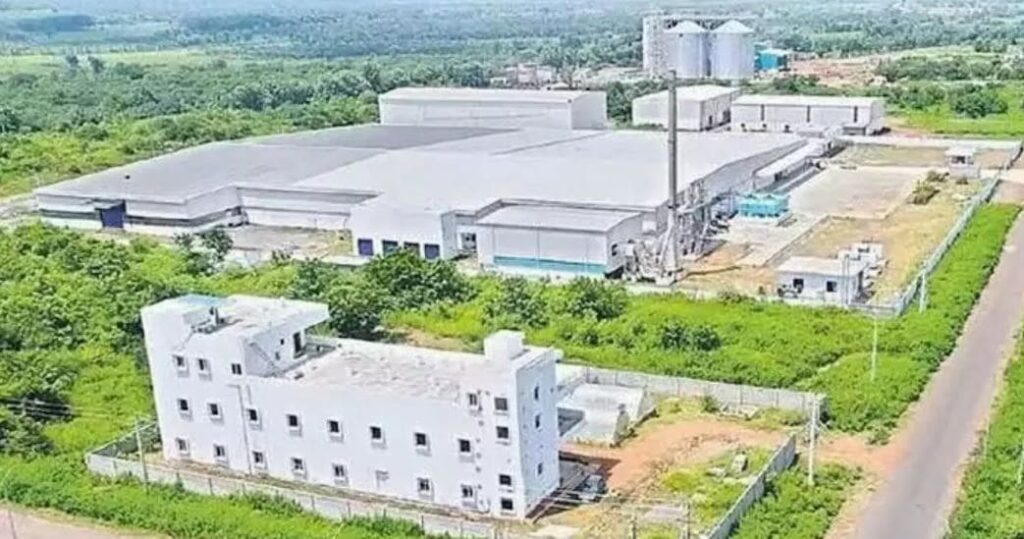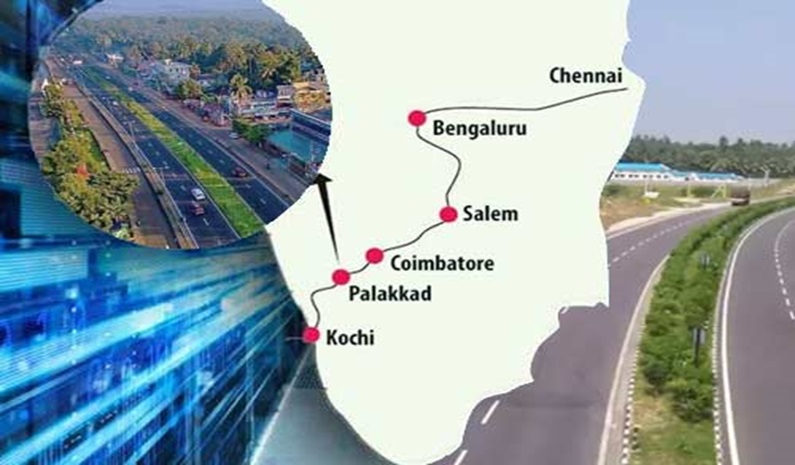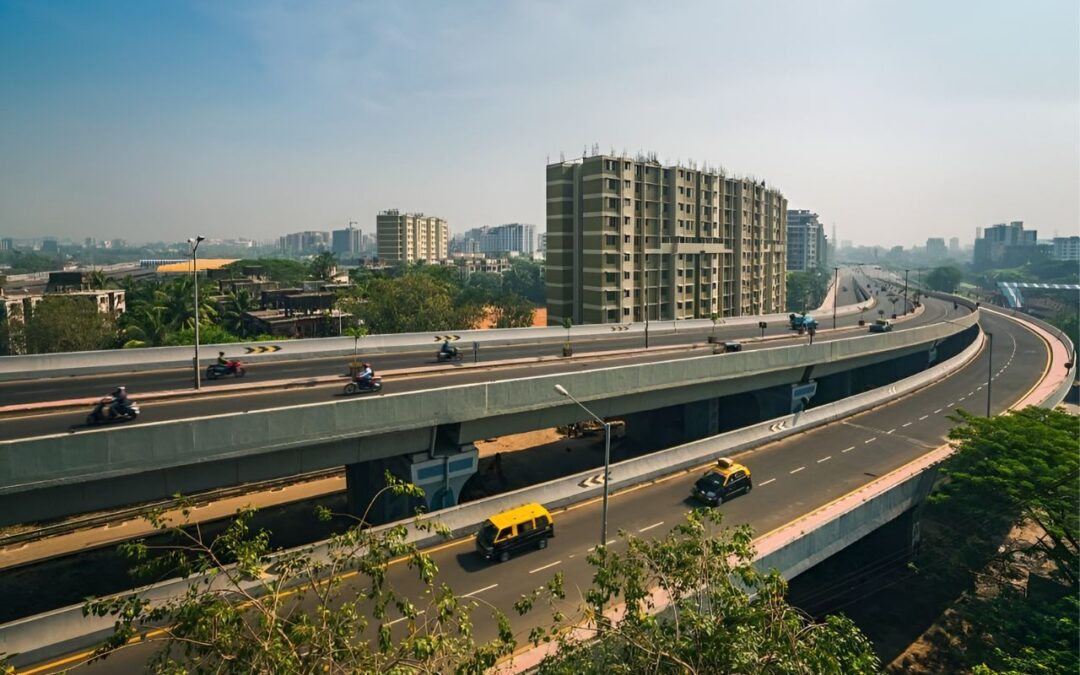Synopsis: Industrial corridors in South India have become a point of transformative investment backed by physical infrastructure, changes to government policy, and sectoral growth to position the region as a global manufacturing and export hub and emerging as investment hotspot.
The vision for India’s industrial corridor aims to achieve economic growth through integrated infrastructure, logistics and manufacturing hubs. South India, growing states such as Tamil Nadu, Karnataka, Andhra Pradesh, Telangana, and Kerala have emerged as the leading destination for large industrial investments supported by government initiatives such as PM Gati Shakti and NICDC projects.
Overview of Industrial Corridors in South India
- Chennai–Bengaluru Industrial Corridor (CBIC): This industrial corridor connects Tamil Nadu and Karnataka with a high-speed roadway including dedicated freight corridors to service all aspects of manufacturing, warehousing, exports, etc.
- Vizag–Chennai Industrial Corridor (VCIC): This corridor stretches from the coastal belt of Andhra Pradesh and Tamil Nadu and is planned for port-led industrial growth alongside logistics and port or export oriented units.
- Hyderabad–Bengaluru Industrial Corridor (HBIC): This industrial corridor connects Telangana and Karnataka and includes mega industrial nodes such as Orvakal. The focus here is on manufacturing around technology and life sciences.
- Kochi–Bengaluru Industrial Corridor (KBIC): This corridor will be developed to promote integrated industrial townships in Kerala and Karnataka focusing on electronics, chemicals, and port-led exports.
Significant Investments and Projects
1. Foxconn – Tamil Nadu (CBIC)

- Investment: ₹15,000 crore
- Focus: EV battery and advanced technology manufacturing situated close to Sriperumbudur
- Effect: Expected impact of 14,000 jobs plus added value to Tamil Nadu’s electronics cluster.
2. Kia Motors – Andhra Pradesh (VCIC)

- Investment: ₹9,000 crore expansion in Anantapur
- Land Area: 536 acres
- Focus: Electric Vehicle (EV) manufacturing
- Effect: This will raise the prospect of increased sustainable mobility through efforts for 6,600 direct jobs and Andhra Pradesh’s decarbonization efforts.
3. Proposed Industrial Hub – Orvakal, Andhra Pradesh (HBIC)

- Investment: ₹12,000 crore
- Land Area: 2,621 acres in Kurnool district
- Focus: Establish multi-sectoral manufacturing hubs undertaking aerospace, pharmaceuticals, ESDM.
- Impact: Prepare BPS (Bharat Pareto Sustainability) to contribute to AP’s industrial output, employment and exports.
4. Krishnapatnam Node (CBIC)

- Investment: ₹₹10,500 crore.
- Activation Land Area: 2,500 acres
- Focus: Crucially container-handling and establishing industrial parks supporting export logistics nodes.
- Impact: Improvement for cargo movement to create industrial township
5. Kochi–Bengaluru Industrial Corridor (KBIC)

- Investment: Estimated cumulative investments expected to cross ₹30,000 crore
- Land Area: Covers about 5,000 acres across Kerala and Karnataka.
- Focus: Multi-sectoral focus including electronics manufacturing, chemicals, textiles, automobile components, and export-oriented units. Emphasis on sustainable manufacturing and green technology.
- Impact: Expected to create over 50,000 direct jobs and numerous indirect employment opportunities, boost exports from south India, and enhance regional economic growth by improving industrial infrastructure and connectivity between key ports and urban centers.
Summary Analysis by Sector
- Electronics and Semiconductors: Tamil Nadu is building public and private sector partnerships, with Foxconn, toward becoming electronics manufacturing hub for exports with growing sector relevance spelling increasingly for Parthian possibilities.
- EV and automotive: Andhra Pradesh and Tamil Nadu continue to lead the sectors due to Kia Motors and Foxconn expansion tapping into EV production potential affecting outputs and exports.
- Renewable energy: Emerging industrial clusters adopting green energy through capex subsidies and PLI schemes.
- Textiles and apparel: Traditional sector being attracted and transitioned to newer modern industry with industrial nodes appealing to sustainability and export potential.
- Pharma and biotech: Telangana and Andhra Pradesh looking to develop strength to life sciences cluster building on Genome Valley and establish itself as HBIC.
- Warehousing and Logistics: warehousing and manufacturing corridors creating economic environments for large distribution centres and last mile contact centres.
Highlights by State
- Tamil Nadu: Has the largest share of manufacturing FDI and boasts EV, electronics and automotive hubs.
- Karnataka: Is strongly advanced in IT, aerospace and high-tech manufacturing and is thriving under CBIC and HWC.
- Andhra Pradesh: Logistics linked to a deep-water port along VCIC, with new EV and pharmaceutical investments.
- Telengana: Inviting new industrial parks near Hyderabad, focusing on life-sciences and digitization.
- Kerala: Investing in green industrial parks linked to the port industry.
Infrastructure and Connectivity Advantages
- Expressways: Chennai–Bengaluru Expressway will quickly bring this to less than 3 hours to travel.
- Ports: Vizhinjam Port and Krishnapatnam Port support cargo handling for export industries.
- Airports and Rail: Upgraded airports and freight corridors to support the developing integrated corridors to ramp up trade and investment flows.
Conclusion
With a strong focus on connectivity, cluster development and innovation, industrial corridors in South India are well positioned to lead India’s industrial and economic resurgence in the next decade.
Written By Rachna Rajput


